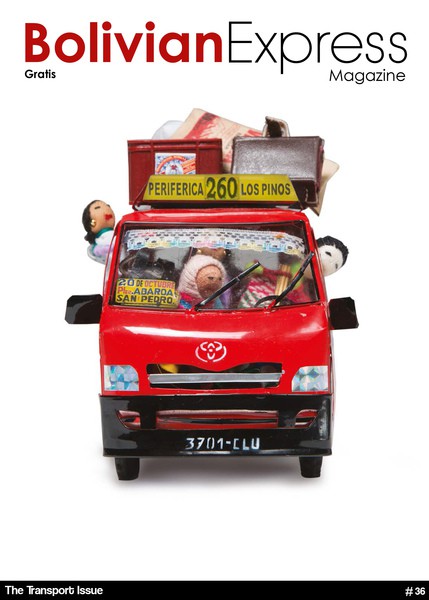
THE NEPTUNE
The Neptune also known as the aguatero is one of the mightiest of La Paz’s police riot control water engines. It has a 2000 liter capacity and 2 power jet motors, yet this aquatic monster was not created with this purpose in mind.
In the museum of the National Police of Bolivia I meet Captain José Arancibia Mollinedo. A political scientist by training, following in his father’s footsteps he entered the world of the military over 16 years ago. Captain Arancibia boasts an imposing size and an unshakable character.
Wearing a gray suit, pink shirt, impeccable mustache and drooping eyelids, he explains how these vehicles were originally used exclusively by firefighters. An old photograph of the vehicle taken in Antofagasta back in 1960 backs his claim. Yet during the coup that took place in 1975, the police had its eyes on Neptuno. When the Fire Brigade received another set of fire trucks imported from Brazil by Firefighters Without Borders, the police got its chance and adopted the Neptune, ritually adopting it by painting it over with the same olive green as their uniforms.
Apart from water they experimented with ammonia, which can produce a momentary loss of consciousness after coming into the slightest contact with the mouth or respiratory system. They have thankfully discontinued use of this chemical, but continued to experiment with other liquids, including red paint to mark rioters and rebels and thus making them distinguishable and easier to capture.
Captain Arancibia, had the opportunity to operate these vehicles for 4 years (1982-1985). He recalls a Carnival when the Neptune sprayed pepinos with water jets, provoking them to battle this aquatic monster while the crowd looked on at the comedic water battle. Yet he also recalls painful experiences such as the time he was ordered to use it against a strike of elderly war veterans. Unable to disobey the orders of his superiors, he tried hard to shoot the powerful jet of water towards their feet in order not to cause them any harm. During his work he also remembers feeling helplessness as he was not able to succour buildings caught in large fires due to the lack of fuel and water caused by insufficient funds. Such experiences were common during difficult, and at times warlike, moments during the country’s history.
According to Captain Arancibia, the impact of the Neptune truck on the population is based on the ‘control of the psychology of the masses’, since their mere presence has a powerful effect which remains the ace up the police’s sleeve when masses are out of control; a common occurrence in the country.
TORITOS
A new form of transport has descended on El Alto. Toritos (‘little bulls’) or mototaxis, as they are otherwise known, have made it their aim to conquer the whole of this ever-expanding city.
They currently cover routes from Villa Adela to Kenko, Cumaravi, Villa Mercedes and Callipampa, and tend to work at night. A trip costs roughly the same as a trufi (Bs 2 to Bs 3).
Alexander Apaza, mototaxi driver and radio operator for the toritos , tells BX that the service doesn’t just cover the centre of El Alto or the Ceja area, but rather connects the scattered neighbourhoods that surround it. They come into their own during busy periods, as evenings often can be, but also when minibus drivers refuse to finish their route, with the classic argument that ‘It isn’t worth it for one passenger, it’s here and no further’.
As Alexander explains, this is where the toritos can offer an alternative. The cost of the Indian manufactured Bajai mototaxi (of which 450,000 are made every year) is $4900, roughly the same as a used taxi from the early ‘90s.
Expensive for a glorified motorcycle you say? ‘It’s very economical, in terms of fuel and repair costs. It’s a motorbike but has the financial yield of a car’, Alexander explains. And its true; these astonishing three-wheeled creatures can carry up to 3 passengers. An impressive feat, considering their diddy 200cc engines. We might not be impressed just yet, but the environment is undoubtedly grateful with their arrival.

 Download
Download





















